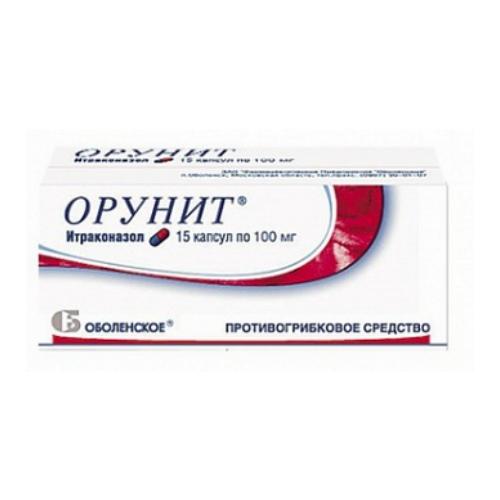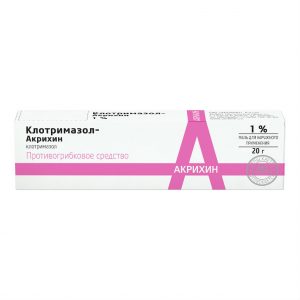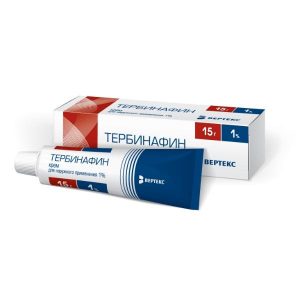Description
Release form
Capsules are transparent, pink, with a blue cap.
Pharmacological action
Antifungal drug with a wide spectrum of action, a triazole derivative.
Inhibits ergosterol synthesis of the cell membrane of fungi. Active against dermatophytes (Trichophyton spp., Microsporum spp., Epidermophyton floccosum), yeast Candida spp. (including Candida albicans, Candida glabrata, Candida krusei), molds (Cryptococcus neoformans, Aspergillus spp., Histoplasma spp., Paracoccidioides brasiliensis, Sporothrix schenckii, Fonsecaea spp., Cladosporium sces., Bl.
Indications
Dermatomycosis
Fungal keratitis
Onychomycosis caused by dermatophytes and / or yeasts and molds
Systemic mycoses, including systemic aspergillosis and candidiasis, cryptococcosis, cryptococcosis, cryptococcosis, cryptococcosis, cryptococcosis, with damage to the skin and mucous membranes, including vulvovaginal candidiasis
Visceral candidiasis
Pityriasis versicolor.
Contraindications
Hypersensitivity to the components of the drug.
Use during pregnancy and lactation
During pregnancy, Orunit is prescribed only in cases of emergency, when the expected benefits of therapy for the mother outweigh the existing risk to the fetus.
Itraconazole in small amounts is excreted in breast milk. If it is necessary to prescribe Orunit during lactation, the expected benefit of therapy for the mother and the potential risk for the infant should be carefully evaluated. If in doubt, decide whether to stop breastfeeding.
Women of childbearing age during the use of Orunit should use reliable methods of contraception throughout the course of treatment until the onset of the first menstruation after its completion.
Special instructions
Itraconazole has a negative inotropic effect. Given this, Orunit should not be prescribed to patients with chronic heart failure (including a history), unless the expected benefit of therapy significantly exceeds the potential risk. In this case, factors such as the severity of the indications, dosing regimen and individual risk factors for the development of chronic heart failure (including the presence of coronary heart disease, heart valve lesions, COPD, renal failure) should be taken into account.
With reduced gastric acidity, absorption of itraconazole is impaired. Patients receiving antacids (e.g. aluminum hydroxide) are advised to take them no earlier than 2 hours after taking Irunin. Patients with achlorhydria or using histamine H2 receptor blockers or proton pump inhibitors are advised to take Orunit capsules with cola.
In very rare cases, when itraconazole was used, severe toxic liver damage developed, including cases of acute liver failure with a fatal outcome. In most cases, this was observed in patients who already had liver disease, as well as in patients receiving other drugs with hepatotoxic effects. In this regard, it is recommended to regularly monitor liver function in patients receiving itraconazole therapy.
In case of symptoms suggesting the development of hepatitis, incl. anorexia, nausea, vomiting, weakness, abdominal pain and darkening of urine, you must immediately stop taking the drug and conduct a liver function test. Patients with elevated liver enzymes or active liver disease should not be treated with Orunit unless the expected benefit justifies the risk of liver damage. In these cases, it is necessary to monitor the level of liver enzymes during treatment.
If neuropathy develops that may be caused by oral administration of itraconazole, treatment should be discontinued.
There is no evidence of cross-sensitivity to itraconazole and other antifungal derivatives of azole. Orunit in capsules should be prescribed with caution to patients with hypersensitivity to other azoles.
Composition
One capsule contains
Active ingredients:
Itraconazole – 100mg (22% pellet form)
Excipients:
Sugar granules,
copolymer of methyl,
dimethylaminoethyl and butyl methacrylate (Eudragit E-100),
hydroxypropyl methylcellulose,
polyethylene glycol.
Capsule shell composition:
Quinoline gelatin (E 104),
patented blue V (E 131),
diamond black (E 151),
titanium dioxide (E 171),
iron oxide yellow (E 172),
gelatin,
orange yellow (E 110).
Dosage and administration of
For optimal absorption of the drug, Orunit should be taken in capsules immediately after meals.
Capsules should be swallowed whole.
Side effects of the
From the digestive system: often – dyspepsia, nausea, abdominal pain, constipation, anorexia, reversible increase in the activity of liver enzymes, cholestatic jaundice, hepatitis in some cases – toxic liver damage, including a case of acute liver failure with a fatal outcome.
From the side of the central nervous system and peripheral nervous system: headache, fatigue, dizziness, peripheral neuropathy are possible.
From the reproductive system: menstrual irregularities are possible.
From the urinary system: hypercreatininemia, staining of urine in a dark color.
From the side of metabolism: edema, hyperkalemia.
From the cardiovascular system: chronic heart failure and pulmonary edema are possible.
Allergic reactions: itching, rash, urticaria, angioedema, Stevens-Johnson syndrome are possible.
Dermatological reactions: possible alopecia.
Drugs simultaneous use with rifutin, rifutin, rifutin and rifampinin, rifactorin, and rifactorin these drugs can significantly reduce the bioavailability of itraconazole and hydroxyitraconazole, which leads to a significant decrease in the effectiveness of the drug. Studies on the interaction of itraconazole with other inducers of hepatic enzymes, such as carbamazepine, phenobarbital and isoniazid, have not been conducted, but a similar effect can be suggested.
itraconazole is mainly metabolized with the participation of the CYP3A4 isoenzyme of the cytochrome P450 system, strong inhibitors of this enzyme (including ritonavir, indinavir, clarithromycin and erythromycin) can increase the bioavailability of itraconazole.
Itraconazole can inhibit the metabolism of drugs that are biotransformed with the participation of the CYP3A4 isoenzyme. The result of this may be an increase or prolongation of their action, including and side effects. After discontinuation of treatment, plasma concentrations of itraconazole decrease gradually depending on the dose and duration of treatment.
Along with itraconazole, terfenadine, astemizole, misolastine, cisapride, triazolam, midazolam (inside), dofetilide, quinidine, pimozide, metabolized by the CYP3A4 isoenzyme, HMG-CoA reductase inhibitors (simvastatin) cannot be prescribed.
Calcium channel blockers have a negative inotropic effect that can enhance the similar effect of itraconazole. Itraconazole can reduce the metabolism of calcium channel blockers. Itraconazole should be used with caution simultaneously with calcium channel blockers.
Drugs that require controlling plasma concentrations: oral anticoagulants, HIV protease inhibitors (ritonavir, indinavir, saquinavir), some antitumor drugs (pink vinca alkaloids, busulfan, docetaxel, trimerexate) calcium channel blockers 3 dihydropyridine and verapamil) some immunosuppressants (cyclosporine, tacrolimus, sirolimus) other drugs – digoxin, carbamazepine, buspirone, alfentanil, alprazolam, brotizolam, p ifabutin methylprednisolone, ebastine, reboxetine. With simultaneous use with itraconazole, if necessary, the dose of these drugs should be reduced.
No interaction was found between itraconazole and zidovudine and fluvastatin.
No effect of itraconazole on the metabolism of ethinyl estradiol and norethisetron was observed.
In vitro studies have shown a lack of interaction between itraconazole and drugs such as imipramine, propranolol, diazepam, cimetidine, indomethacin, tolbutamide and sulfamethazine when bound to plasma proteins.
Overdose
There is no evidence of an overdose of the drug.
Treatment: in case of accidental overdose during the first hour after taking the drug, gastric lavage should be done, if necessary, prescribe activated charcoal.
Symptomatic and supportive therapy is indicated.
Itraconazole is not excreted during hemodialysis.
No specific antidote known.
Storage Conditions
The product should be stored in a dry, dark place at a temperature not exceeding 25 ° C.
Term hodnosty
3 years
Active ingredient
Itraconazole
Terms leave through pharmacies
In retseptu
lekarstvennaja form
kapsul
Obolenskoye FP, Russia




